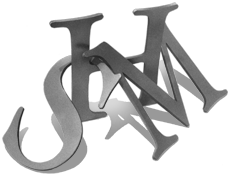Work | Blurb
 Here at Studio SHM we pride ourselves in our long-term client relationships - our standard of service is second to none. We’ve been variously described as off-the-wall, talented, non-conformist, expert, opinionated, and hard-working. Whatever, we always go the extra mile for our clients.
Here at Studio SHM we pride ourselves in our long-term client relationships - our standard of service is second to none. We’ve been variously described as off-the-wall, talented, non-conformist, expert, opinionated, and hard-working. Whatever, we always go the extra mile for our clients.

Food list for Fortnum & Mason, which explains how their offering is not simply expensive, but top quality at reasonable prices.
We work for all kinds of clients, from multinationals to start-ups, on a wide range of projects. We like to think around a problem - for instance when Fortnum & Mason asked us to compile their Food List for them, we suggested they take the opportunity to explain why their food is so good, because they help their producers to improve their product. It helped make the point that when you buy from Fortnums you really are getting the best.

Steinway commissioned us to "polish" up their new sub-brand and packaging for their range of furniture care products.
We can get involved at all stages of a project; usually the earlier our involvement, the better the end result. That may sound arrogant, but it’s true.
Over the next few paragraphs we have outlined the typical key stages of a project, with examples of the sort of questions you should be considering, and how we can help you get there.
Phase 1: Defining the problem

A guide to good writing produced for the Foreign Office, to help the mandarins cut down on their overly bureaucratic waffling.
What problem you are trying to solve?
We can help you get to the root of the problem and put together a brief either for ourselves or other contractors. For instance, we were called in by a national museum to analyse their retail operation, and report back with ideas.
What will happen when this has been achieved?

The "Voyage" map and associated workshop materials for BG
Often it can help to have a visual image of the likely outcomes. We designed a set of workshop materials for British Gas that outlined their strategy and showed a series of possible end results - including failure!
How will you get there?
For larger projects, having a "road map" of the key milestones can prove useful to ensure everyone knows how and when they are involved. Sutherland-Hawes McLean designed such a map, along with supporting workshop materials, to help Visa roll out their new strategic programme.
Phase 2: Innovating
Can you muster the support?

Tea room / café concept developed and visualised for Cooper & Co.
We have helped start up companies raise finance with well-presented proposals and product mock-ups - one such start-up raise £1.5m on the strength of one of our product visualisations. We visualised the future of London Underground to help gain support (and finance) for LU’s plans within government.
What information do you need to do this?
Gathering together information and research etc into one coherent document can be crucial. We’ve helped GlaxoSmithKline share marketing experience across worldwide markets of many of their Consumer Healthcare products. We’ve put together brand books for many of their key brands.
Which of your ideas is the best?

Proposed exhibition stand and graphics for Petro-Canada
We can produce visuals and prototypes to help you make the decision between various likely options. We can help analyse your various ideas and give an impartial view of the one most likely to succeed. And sometimes come up with better ideas of our own.
Phase 3: Generating value

Our work on the Bodyclocks included overseeing the product design, ensuring it adhered to the new friendly, approachable brand.
How will you sell this to the customer?
Having done all the hard work to develop your product, company or idea it’s crucial to give it the best chance to succeed. Which is where we come in - making sure your product or message is bought or understood by it’s intended recipients. As well as helping many start-ups get off the ground, we’ve had some spectacular successes with established companies, for instance the Lumie Bodyclocks - sales up 1200% in three years!
And last but not least...
What can be learnt from your experience?

We've created animated presentations and built a knowledge hub for Citrix and Fujitsu for their ongoing collaborations.
Often companies will not bother to make full use of their experience, and valuable knowledge can go to waste. It’s key to capture as much useful learning from a project as possible for use in the future. The work we have done for GlaxoSmithKline’s Marketing Leadership Programme is a classic example of sharing information among teams for future reference. More recently we’ve been working with Citrix and Fujitsu on a knowledge hub for their shared intranet.
So, how may we help you?
